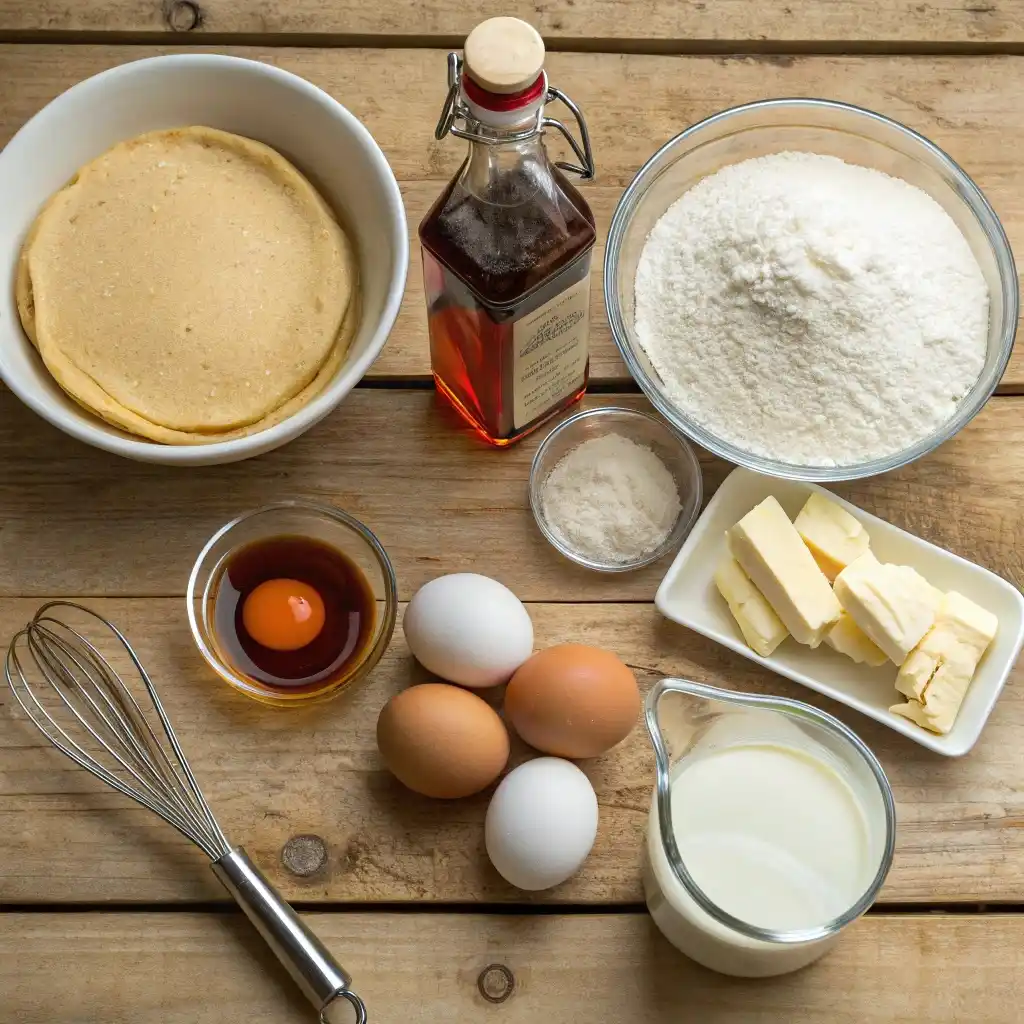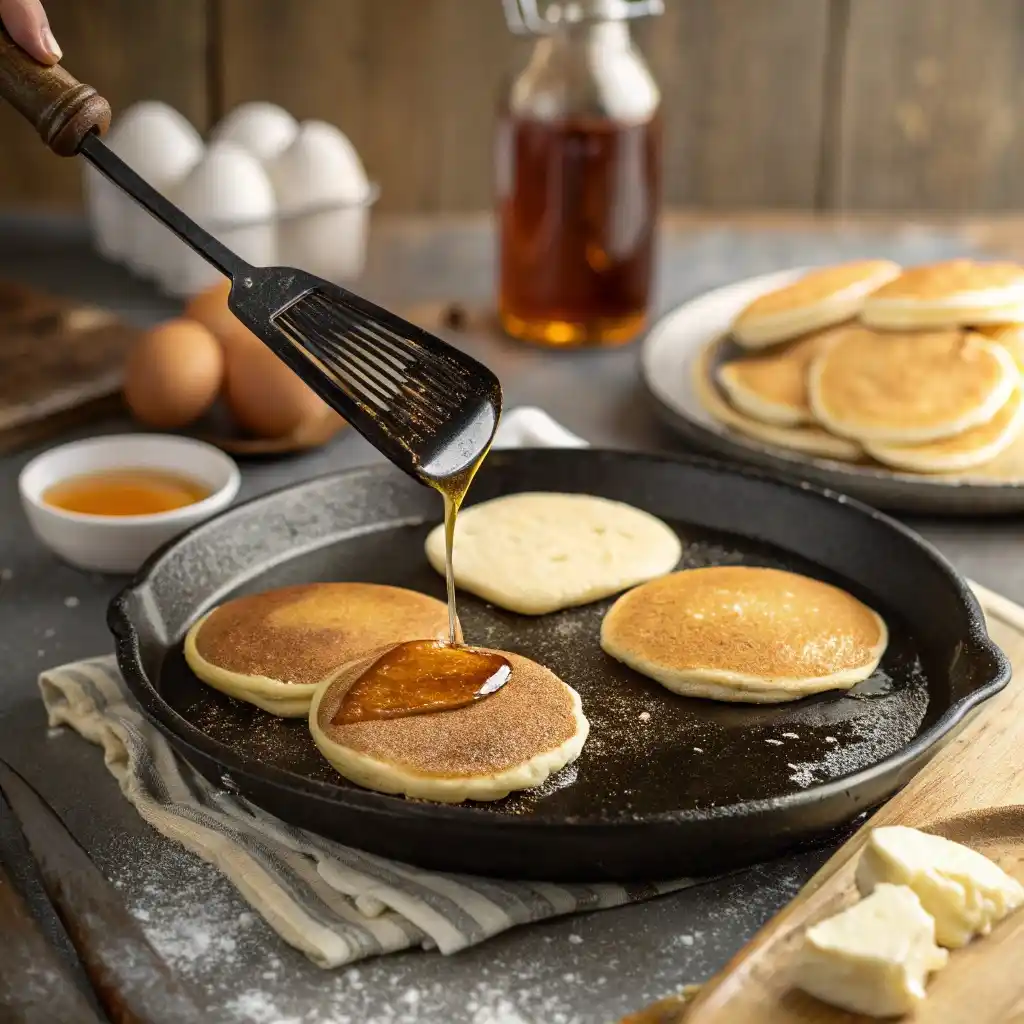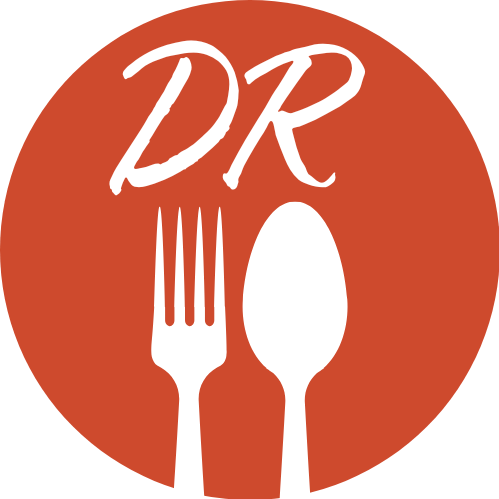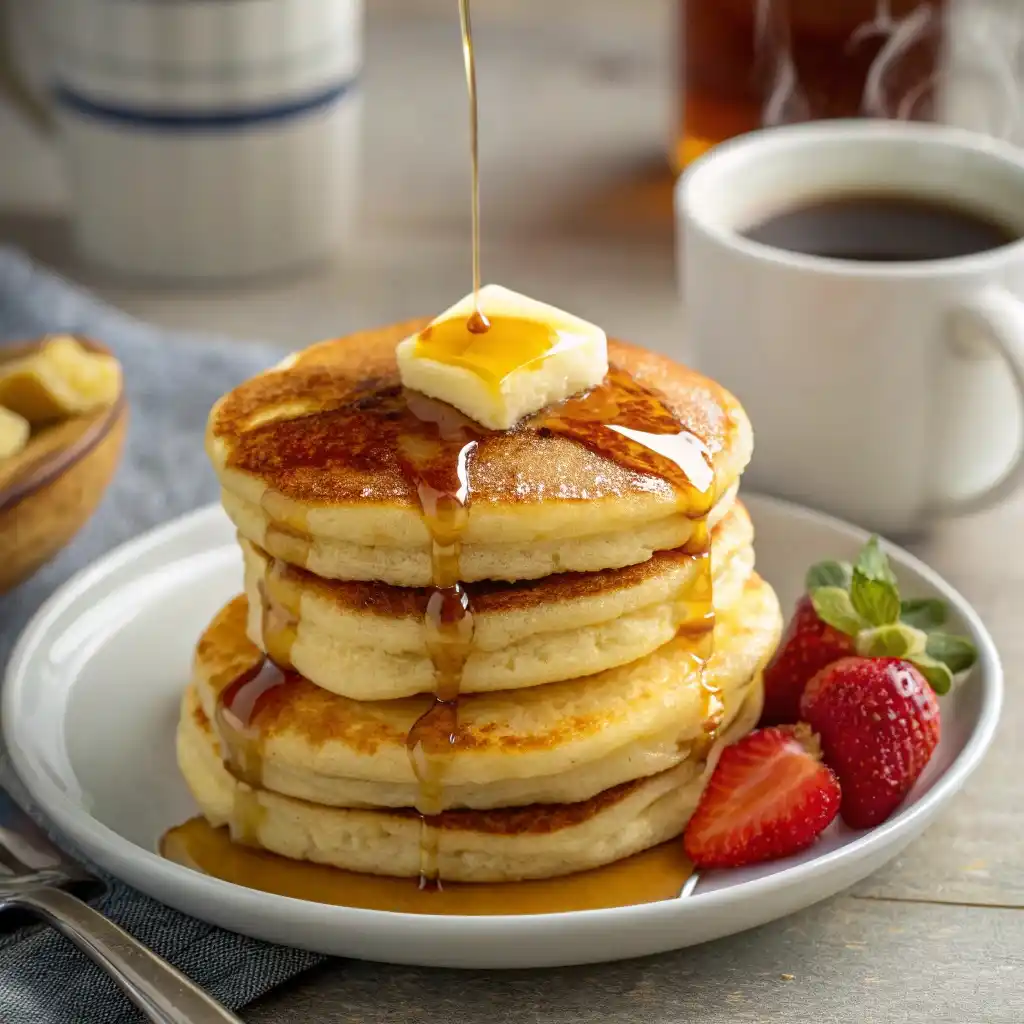Few breakfast dishes are as universally loved as pancakes with maple syrup and butter. Not only is this combination simple, but it is also indulgent, offering a comforting start to the day. Over the years, it has stood the test of time, satisfying palates across the globe. The fluffy texture of pancakes, combined with the rich creaminess of butter and the sweet, golden goodness of maple syrup, creates a perfect harmony of flavours. Whether enjoyed as a leisurely weekend treat or a quick weekday breakfast, pancakes with maple syrup and butter remain a timeless favourite.
The History of Pancakes with Maple Syrup and Butter
How Pancakes with Maple Syrup and Butter Became a Classic
Discover how this iconic breakfast combination evolved over the centuries.
Ancient Origins of Pancakes
Pancakes are one of the oldest prepared foods, with evidence dating back to 5,300 years ago. Traces of pancake-like foods were discovered with the remains of Ötzi the Iceman, highlighting their significance in prehistoric diets. Early pancakes were simple to make and highly adaptable, as they were prepared using basic ingredients like grains and water before being cooked on hot stones. Over time, this ancient staple evolved, influencing various cultures and culinary traditions worldwide. As a result, pancakes have remained a beloved dish, continuously adapting to new ingredients and cooking techniques across generations.
Evolution Across Cultures
As civilizations advanced, pancakes evolved and took on unique forms across different cultures:
- Ancient Greece and Rome: Pancakes, known as “teganites,” were made with wheat flour, olive oil, honey, and curdled milk.
- Medieval Europe: Pancakes became popular during Shrove Tuesday, a day to use up eggs, milk, and butter before Lent.
- Asia: Variations like Japanese “Okonomiyaki” and Indian Dosa highlight regional twists.
- America: Pancakes became a staple in early settler diets, evolving into the modern fluffy variety paired with maple syrup.
Through these variations, pancakes have retained their status as a beloved food across cultures, easily adapted to local flavours and ingredients.
The Role of Maple Syrup in Pancakes
Learn why pure maple syrup is the perfect partner for pancakes with butter.
Origins and Production of Maple Syrup
Maple syrup has deep roots in North American history, particularly in Canada and the northeastern United States. Indigenous peoples were the first to discover the process of extracting sap from sugar maple trees and boiling it into syrup. Today, maple syrup is still produced similarly:
- Tapping Trees: Sap is collected during late winter or early spring.
- Boiling and Filtering: The sap is heated to remove water, leaving behind pure, golden syrup.
- Grading: Syrup is classified by color and flavor intensity, ranging from Golden to Dark Robust.
Why Maple Syrup Complements Pancakes
Maple syrup’s natural sweetness and earthy, caramel-like flavor pair perfectly with pancakes. Its liquid consistency soaks into the fluffy layers of pancakes, creating a rich and indulgent bite. Unlike artificial syrups, pure maple syrup adds a complex depth of flavor that enhances the overall dish.
How Butter Complements Pancakes with Maple Syrup
Why Butter and Maple Syrup are the Ultimate Pancake Toppings
Understand how butter enhances the flavor of pancakes and complements maple syrup.
- Cooking Pancakes: Adding butter to the pan helps achieve a golden-brown exterior and prevents sticking.
- As a Topping: Melted butter creates a creamy, rich layer that complements the sweetness of maple syrup. Its salty undertones balance the dish, making each bite more flavorful.
Choosing the Best Butter for Pancakes with Maple Syrup
Find out which types of butter work best to elevate your breakfast experience
Choosing the right type of butter can enhance your pancakes even further:
- Salted Butter: Adds a slight savory note, balancing the sweetness of maple syrup.
- Unsalted Butter: Offers a pure, creamy flavor for those who prefer less salt.
- Compound Butter: Flavored butters, such as cinnamon or honey butter, can add an extra layer of indulgence.
- Whipped Butter: Light and airy, it spreads easily and melts quickly into warm pancakes.
Butter’s versatility makes it the perfect companion for pancakes, transforming them from ordinary to extraordinary.
Classic Pancake Recipe
Step-by-Step Guide to Make Fluffy Pancakes

Here’s a simple, foolproof recipe to create light and fluffy pancakes:
Ingredients:
- 1 ½ cups all-purpose flour
- 3 ½ teaspoons baking powder
- 1 teaspoon salt
- 1 tablespoon sugar
- 1 ¼ cups milk
- 1 egg
- 3 tablespoons melted butter
Instructions:
- Mix Dry Ingredients: Sift together the flour, baking powder, salt, and sugar in a large bowl.
- Add Wet Ingredients: Make a well in the centre of the dry mix and pour in the milk, egg, and melted butter. Stir until smooth, but don’t overmix.
- Preheat the Pan: Heat a lightly buttered griddle or non-stick frying pan over medium heat.
- Cook the Pancakes: Pour ¼ cup of batter onto the hot pan for each pancake. Cook until bubbles form on the surface, then flip and cook the other side until golden brown.
- Serve: Stack pancakes, top with a pat of butter, and drizzle generously with maple syrup.
Enjoy your fluffy, golden pancakes as a satisfying breakfast treat!
Variations of Pancakes Around the World
American Pancakes
American pancakes are thick, fluffy, and often served stacked with butter and maple syrup. They get their fluffiness from baking powder, which makes them rise beautifully when cooked. Popular toppings include fruits, whipped cream, and chocolate chips.
French Crêpes
French crêpes are thin, delicate pancakes made without a leavening agent. They are typically served with both sweet and savory fillings:
- Sweet: Nutella, fruit, or sugar with lemon.
- Savory: Ham, cheese, and eggs.
Crêpes are versatile and elegant, often enjoyed as a breakfast or dessert.
Japanese Soufflé Pancakes
Japanese soufflé pancakes are known for their ultra-fluffy and jiggly texture. Because they are made with whipped egg whites, they rise to impressive heights, creating a light, airy consistency. Typically, they are served with powdered sugar, fresh berries, and maple syrup, enhancing their sweetness.
Nutritional Benefits of Pancakes with Maple Syrup and Butter
Macronutrient Breakdown
A standard serving of pancakes with maple syrup and butter provides the following macronutrients:
- Carbohydrates: Pancakes are a great source of quick energy due to their flour and syrup content.
- Protein: Eggs and milk in the batter offer a moderate protein boost.
- Fats: Butter provides healthy fats that help balance the meal and add satiety.
Health Considerations
While delicious, pancakes with maple syrup and butter are best enjoyed in moderation:
- Opt for whole-wheat flour or oat flour for added fibre and nutrients.
- Use pure maple syrup instead of artificial syrups to avoid unnecessary sugars and additives.
- Add fruit like bananas or blueberries for natural sweetness and vitamins.
- Choose unsalted butter or a small compound butter to manage sodium and fat intake.
Pancakes can be part of a balanced and nutritious breakfast by making small adjustments.
Tips for Perfect Pancakes with Maple Syrup and Butter

Common Mistakes to Avoid When Making Pancakes with Maple Syrup
Ensure you get light, fluffy pancakes with the perfect balance of toppings.
- Overmixing the Batter: Overmixing leads to dense, chewy pancakes. Mix until the ingredients are just combined, leaving a few lumps.
- Incorrect Heat: Too high heat will burn the pancakes outside while leaving the inside uncooked. Use medium heat for even cooking.
- Skipping the Rest Time: Allowing the batter to rest for 5–10 minutes helps it fluff up, creating lighter pancakes.
- Flipping Too Early: Wait until bubbles form and the edges look set before flipping. Flipping too early results in uneven cooking.
Best Cooking Techniques
- Grease the Pan Lightly: Use a small amount of butter or oil to prevent sticking without making the pancakes greasy.
- Measure the Batter: Use a ¼ cup or ladle to ensure consistently sized pancakes.
- Don’t Press the Pancakes: Avoid pressing them down with a spatula, as it prevents fluffiness.
- Keep Pancakes Warm: Place cooked pancakes in a warm oven (200°F/95°C) to keep them hot without drying out.
By following these tips and techniques, you’ll consistently create light, fluffy, and golden pancakes every time.
Choosing the Best Maple Syrup
Grades of Maple Syrup
Maple syrup is graded based on colour and flavour, helping you choose the perfect option to pair with your pancakes. The grades include:
- Golden: Light in colour with a delicate, subtle flavour, ideal for those who prefer milder syrup.
- Amber: A rich amber hue with a balanced, classic maple flavour—perfect for pancakes and waffles.
- Dark: It is deeper in color and stronger in flavor, offering a robust maple taste ideal for those who love bold sweetness.
- Very Dark: Almost black with a strong, intense flavour, often used in cooking or baking for its deep maple notes.
How to Identify Authentic Maple Syrup
To ensure you’re getting pure maple syrup and not an imitation, check the following:
- Label: Look for “100% Pure Maple Syrup” on the packaging. Avoid products labelled as “pancake syrup,” which are typically made with corn syrup and artificial flavours.
- Ingredients: Authentic maple syrup should have only one ingredient: maple syrup.
- Source: Genuine maple syrup often comes from Canada or the northeastern United States, where sugar maples thrive.
Choosing authentic maple syrup ensures you enjoy a natural and complex sweetness that complements pancakes perfectly.
Serving Pancakes: Toppings and Pairings
The Best Techniques for Serving Pancakes with Maple Syrup
Master the art of preparing and presenting pancakes with butter and syrup.
While maple syrup and butter are classic, other toppings can elevate your pancake experience:
- Fresh Fruits: Berries, bananas, and apple slices add natural sweetness and nutrients.
- Nut Butters: Peanut butter, almond butter, or hazelnut spread provides a creamy, protein-rich topping.
- Whipped Cream: A light and airy addition for an indulgent touch.
- Chocolate Chips: Add sweetness with semi-sweet or dark chocolate chips.
- Yoghurt: Greek or flavoured yoghurt can be a creamy, tangy alternative to butter.
- Compotes or Jams: Fruit compotes, like blueberry or strawberry, provide flavour and texture.
Beverages to Pair with Pancakes
The perfect beverage pairing enhances the flavours of your pancakes:
- Coffee: A classic choice, coffee’s bitterness balances the sweetness of maple syrup.
- Tea: Black teas or chai pair well with pancakes, offering subtle spiced notes.
- Milk: A traditional choice for a comforting and familiar pairing.
- Fresh Juices: Orange or apple juice provides a refreshing, fruity contrast.
- Smoothies: Berry or banana smoothies add extra nutrition and complement pancake toppings.
The Role of Pancakes in American Culture
Pancakes as a Staple Breakfast Food
In the United States, pancakes are a beloved part of breakfast culture, enjoyed at home, diners, and restaurants. Not only do they symbolize warmth, comfort, and tradition, but they also bring families together for leisurely weekend breakfasts. Moreover, their simplicity and endless topping possibilities have solidified their place as a versatile and satisfying morning meal.
Pancake Celebrations and Traditions
Pancakes are celebrated across the United States through various traditions:
- Shrove Tuesday (Pancake Day): Originating from European customs, this day marks the last chance to indulge before Lent. Families celebrate by enjoying stacks of pancakes.
- National Pancake Day: Celebrated annually, this day encourages pancake lovers to indulge in their favourite breakfast treat, often with charitable pancake giveaways at major restaurant chains.
- IHOP Pancake Day: A widely recognized event in the U.S., where free pancakes are served to customers to support charitable causes.
These traditions highlight pancakes as more than just a meal—they symbolise celebration and togetherness in American culture.
Healthier Alternatives to Traditional Pancakes
Whole-Grain Pancakes
Switching to whole-grain pancakes can add fibre, vitamins, and minerals, making breakfast more nutritious. Consider these options:
- Whole-wheat flour: Provides a nutty flavour and extra fibre.
- Oat Flour: Gluten-free and rich in nutrients, oat flour makes for soft, fluffy pancakes.
- Buckwheat Flour: A high-protein, gluten-free option with an earthy flavour.
Add toppings like fresh fruit, Greek yoghurt, or a drizzle of honey to keep it healthy and satisfying.
Sugar-Free Maple Syrup Options
For those watching their sugar intake, sugar-free alternatives can provide a similar maple flavour without the extra calories:
- Pure Monk Fruit Syrup: A natural sugar substitute with zero calories.
- Stevia-based syrups: Offer sweetness without impacting blood sugar levels.
- Low-Calorie Maple Syrup Alternatives: Look for products sweetened with natural alternatives like erythritol or allulose.
These options allow you to enjoy pancakes guilt-free while maintaining the classic pancake experience.
Pancakes with maple syrup and butter remain a timeless breakfast classic. They are loved for their versatility, rich history, and indulgent flavors. Whether you prefer traditional recipes, modern toppings, or healthier alternatives, pancakes are a centrepiece of breakfast culture worldwide.
How to Store and Reheat Pancakes
Best Practices for Storing Leftover Pancakes
To ensure pancakes remain fresh and ready to enjoy later, follow these storage tips:
- Allow Pancakes to Cool: Let pancakes cool to room temperature before storing to avoid moisture buildup.
- Use an Airtight Container: To prevent sticking, arrange the pancakes in a single layer or separate them with parchment paper.
- Refrigerate: Store pancakes in the refrigerator for up to 3 days.
- Freeze for Long-Term Storage:
- Stack pancakes with parchment paper between each layer.
- Place them in a freezer-safe bag or container, removing excess air.
- Frozen pancakes can last up to 2 months.
Reheating Tips to Retain Flavor
Properly reheating pancakes helps them stay fluffy and delicious:
- Microwave (Quick Option):
- Place pancakes on a microwave-safe plate and cover with a damp paper towel.
- Heat 20–30 seconds for refrigerated pancakes or 60–90 seconds for frozen pancakes.
- Oven (Best for Large Batches):
- Preheat the oven to 350°F (175°C).
- Place pancakes on a baking sheet in a single layer.
- Cover with foil to prevent drying out and heat for 8–10 minutes.
- Toaster (Crispy Edges):
- Use a toaster to quickly reheat pancakes from the fridge or freezer.
- Toast on a medium setting for a few minutes until warm and slightly crispy.
- Skillet (Retains Freshness):
- Heat a non-stick skillet over medium heat.
- Add a small pat of butter and warm each pancake for 1–2 minutes per side.
Reheating pancakes with care will make them taste just as good as freshly made ones, ready to be topped with butter and maple syrup.
FAQs About Pancakes with Maple Syrup and Butter
1. Can I make pancakes ahead of time?
Yes, pancakes can be made ahead of time and stored in the refrigerator for up to 3 days or frozen for 2 months. Reheat them using a microwave, oven, toaster, or skillet for the best results.
2. What is the best type of maple syrup for pancakes?
Pure maple syrup, especially Amber Grade A, offers pancakes the perfect balance of sweetness and flavour. Avoid artificial syrups, which contain additives and corn syrup.
3. Can I use butter alternatives for pancakes?
Yes, alternatives like ghee, coconut oil, or vegan butter can replace traditional butter while adding richness and flavour.
4. Are pancakes with maple syrup and butter healthy?
While undeniably delicious, traditional pancakes can be high in carbs and sugar. However, for a healthier version, you can use whole-grain flour, sugar-free maple syrup, and even fruit for natural sweetness and extra nutrients.
5. Why are my pancakes not fluffy?
Pancakes can turn out flat if the batter is overmixed, the leavening agent (like baking powder) is too old, or the skillet temperature is too low. Therefore, mixing until just combined and cooking on medium heat is essential to achieve the perfect fluffy texture.
6. What are other toppings I can use with pancakes?
Besides maple syrup and butter, popular toppings include:
- Fresh fruits like berries and bananas
- Nut butter (e.g., peanut butter or almond butter)
- Whipped cream
- Chocolate chips
- Honey or fruit compotes
Conclusion
Pancakes with maple syrup and butter remain an unbeatable breakfast choice due to their simplicity, versatility, and timeless appeal. They always provide warmth and comfort, whether enjoyed during a family brunch or as a special treat. Furthermore, combining fluffy pancakes, rich butter, and sweet maple syrup creates a satisfying experience. From traditional recipes to modern variations, pancakes celebrate flavour and texture and evoke nostalgia, bringing people together around the breakfast table.
Want More Cooking Inspiration?
The History and Appeal of Bagels: A Timeless Breakfast Staple

